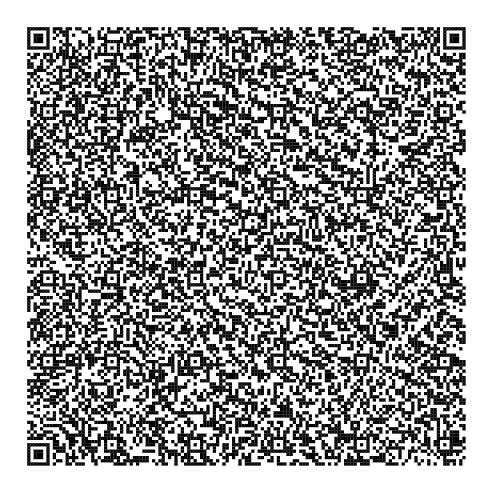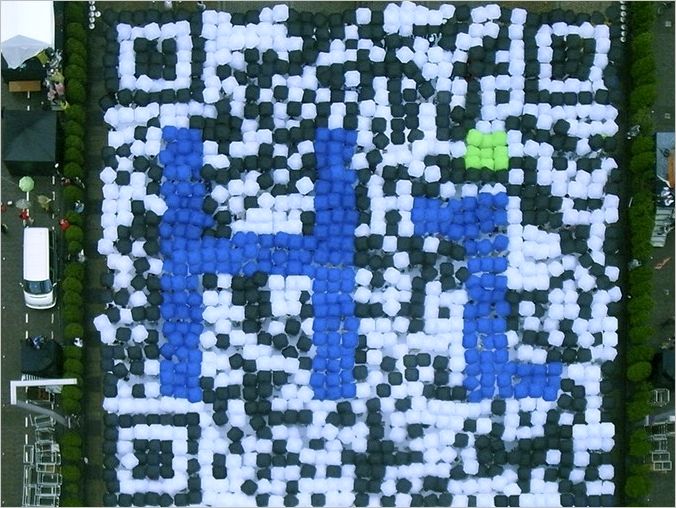Do you ever print a document without checking the preview? Or did you ever give a speech without practicing it first in front of the mirror? In the same way, do not download your QR Code before going through this must-know checklist:
1. Test your code by scanning it first
Though you know how to create QR Codes, they can become complicated at times. So it is advisable to test scan the code at least twice. And it’s recommended to test-scan the QR Code using different mobile applications to confirm that it works well. If your QR Code doesn’t scan, the possible reasons for complications could be:
Too much information
QR Codes can store so much more information than a traditional 1D barcode. But if you add paragraphs to a static QR Code, it will become large, sometimes too large for the poor scanner. So, you need to keep it simple.
And if really have a lot of information to encode, go for Rich Text QR Code. It allows you to create a mobile landing page with all the information you want without getting unscannable.
Given below is a QR Code with just too much information:
Poor contrast
If the contrast between the background and the data matrix is low, it is likely that the QR Code will not scan. Black QR Codes on white backgrounds will most definitely scan. Hence, if the QR Code’s matrix is dark in color, keep the background light and vice-versa.Given below are examples of QR Codes with poor contrast:
Complicated Graphic Design
Just like a traditional 1D barcode, a QR Code scanning application must be able to recognize each unit of a QR Code. While QR Codes provide us with the flexibility of customization, one should not get carried away. The design shown below, despite being visually appealing and a great effort, will not scan:
Inappropriate size
In reality, there is no ‘ideal size’ for a QR Code image. However, you must always ensure that its size is appropriate enough to be scannable. You can calculate the minimum QR Code size for your campaign. This will ensure that your QR Code remains scannable.
2. Check if your QR Code has the option of being trackable
You obviously want your audience to go online and check out your offer, website, or profile. But do you also want to know where and how many people are part of your audience? Then, use dynamic QR Codes. They are both editable and trackable.
While there are some free services available online, it’s recommended that you choose a professional QR code generator. It would provide you with advanced scan tracking features that will come in handy to monitor your campaigns and optimize them in the future.
3. Check if your QR Code is editable
You probably want a QR Code that is editable. That means a QR code that helps you edit the encoded content after you’ve created it. And dynamic QR Codes are up for the task.
They allow you to edit the encoded without changing the design of the QR Code. Fantastic, right?
4. Add error correction scripts
If you are putting QR Codes in places that are prone to wear and tear, consider adding error correction to them. A high error correction in a QR Code helps smartphone scanners read the damaged QR Codes too. Note that the higher the error correction the denser the data matrix of the QR Code becomes.
In Scanova, you can find the error correction settings under Advanced Settings.
5. Select the optimal export format
Planning to use QR Codes for print media creatives such as billboards or flyers? Then make sure you export them in high-resolution formats—SVG, EPS, or PDF. They ensure that the QR Code doesn’t get pixelated no matter how much resizing is done.
It ensures that your QR Code scans well irrespective of the -resizing.
6. Add an appropriate CTA
CTA or ‘Call-to-Action’ is a small instruction text alongside QR Code. This text nudges the end-users to take the required action.
It could be anything such as ‘Scan here to visit the website”’ or ‘Scan here to view product details’.
7. Add a design to the QR Code
Since you want to get as many scans as possible, you can consider adding design to your QR Codes. That’s because custom QR Codes attract 50%-200% more scans than basic black-and-white ones.
Hence, if your use case is promotional, definitely go for it. You can customize your QR Code by adding a logo and colors or even a background image to it.
How to create QR Codes
I. Create QR Codes one by one
If you don’t need hundreds or thousands of QR Codes, you can follow this method. It gives you a wide variety of QR Code categories to choose from. Depending upon your use case, you can select the best one.
Here, you can create both dynamic and static QR Codes.
To create one, you simply need a QR Code generator. You can head on to any search engine and find the best one for yourself.
For your convenience, here is a detailed comparison of the best QR Code generator available online. You can go through it to find the best one for yourself.
Once finalized, you can create your first QR Code. And here’s a step-by-step guide on how to get you started.
II. Create QR Codes in bulk
A bulk QR Code generator is the tool that allows you to create thousands of QR Codes in one go. Compared to the first method, here you can only generate static QR Codes. And a bulk generator allows you to choose from Website URL QR Codes, Simple Text QR Codes, Serial Code QR Codes, and VCard QR Codes.
You just need to upload a data file with all the details to be encoded. Once done, wait for the QR Codes to be generated and download them in a zip folder.
For more information, here is a detailed guide on how to generate QR Codes in bulk.
III. Create QR Codes programmatically
If you have your own information system or mobile application, then you can integrate QR Code generation into them.
Here, QR Code API can help you do it. It allows you to generate QR Codes programmatically in real-time. Convenient, right?
That’s it. That is all you need to know about QR Code’s best download practices. You can now follow them to go ahead with your first QR Code campaign.


